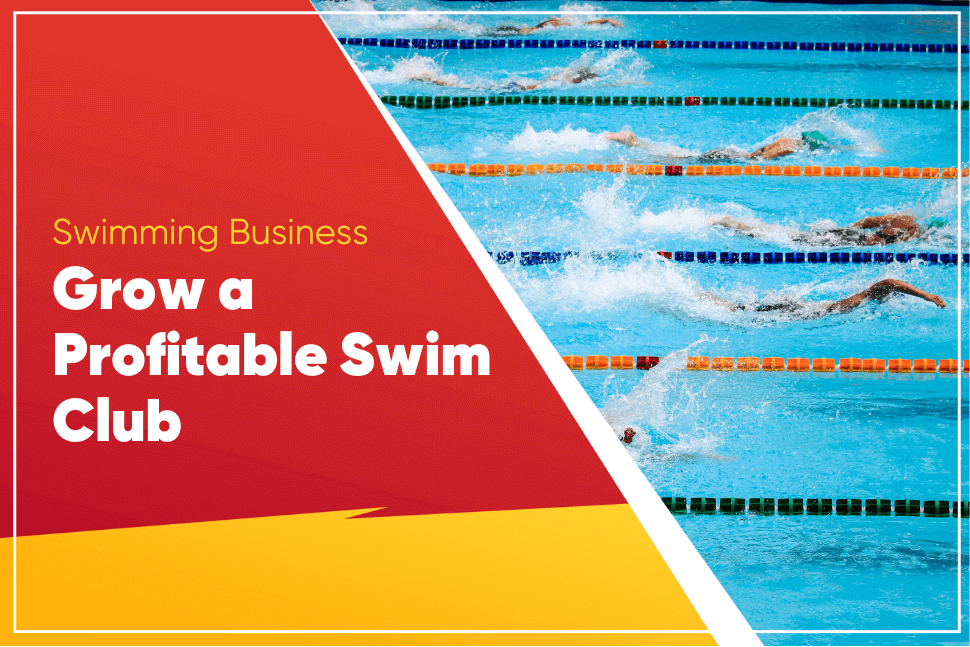Starting your own swim club can be a significant endeavor. The owner/head coach must have years of experience and there is a lengthy application process for those registering with USA Swimming. All this effort is for not if you can’t grow a profitable swim team. Luckily, there are several ways that a new swim club can ensure sustainable growth for years to come.
How do you grow a profitable swim club? The easiest answer is to run a good swim program. Your main focus should always be providing high-quality coaching and club management for your swimmers and their parents. While there are other things you can do to grow your swim club, happy members should always be your primary focus.
On rare occasions, even happy members aren’t enough to help your swim club grow into a profitable business. Swim teams are typically a business founded out of a passion for the sport, but that doesn’t mean that the owners and coaches should be losing money along the way. In addition to running the best swim club possible, we will go over a few additional tips to grow your swim club.
How to Run a Profitable Swim Club
It seems obvious to state, but you should do a good job of running your swim club and coaching your athletes. Not only does this increase member retention, but it will also increase invaluable word-of-mouth marketing. This marketing tool can’t be bought and will only come from satisfied athletes and families. Running a successful swim club is more than just the swimming portion of the business. You’ll need to ensure that club management is running smoothly and efficiently as well.
Swimming
1. Hire Experienced Coaches
Some of your athletes may just be there for fun, but many swimmers are looking to get better and compete at higher levels. Natural talent can help some kids. But, most will need experienced and knowledgeable coaches to help them improve their swimming abilities.
Many swim clubs will hire older athletes and less experienced coaches to help with the beginner levels. There is no issue with this, but there should be experienced coaches at the helm of the program. USA Swimming requires four consecutive years of coaching with a USA Swimming club or similar, including two years of head coaching.
2. Balance Knowledge and Teaching
Coaches with years of experience and loads of knowledge are integral to a successful swim club. However, if those coaches cannot relate to the athletes and communicate effectively, the education is all for not.
I’m sure many of us can remember coaches from our childhood sports that were mean, hard headed, or too competitive. Coaches like that can take the fun out of any sport. Even if athletes have competitive aspirations, the swim team should be a fun community for everyone.
Ensure that your coaches can translate their knowledge into easy-to-understand lessons and cues for the swimmers. It will lead to less frustration on everyone’s part.
3. Be Inclusive
Elite swimmers get a lot of attention in swim clubs, but your program should welcome all ages and swimming levels. There is nothing wrong with promoting friendly competition, but all athletes and families should feel comfortable joining your team.
Inclusivity also means being welcoming to all races, ethnicities, family units, sexualities, and genders. Just because you are inclusive to all walks of life and skill levels does not mean that you can’t also promote competition. Healthy competition can be a great motivation for all athletes.
4. Get Exposure
Your elite athletes will be looking for opportunities to compete. The best athletes probably also have dreams of swimming in college or competing at the Olympics. While a majority of your swimmers are most likely recreational or don’t have further aspirations, you have to keep the elite swimmers in mind.
Make sure that you are allowing your elite swimmers to compete at the highest levels possible. Local meets are great for all swimmers, but the top athletes should also be competing in state and regional (potentially also national) events.
College scouts should also be aware of your swim club if you have athletes capable of swimming at the collegiate level. Sometimes the difference between a Division 1 swimmer versus a Division 2 or 3 swimmers is just exposure to the right people.
Club Management
1. Over-Communicate
In any business, it is important to communicate effectively and fully with your customers. As a swim club, dealing with adolescents and families, it is even more imperative that there is never a lapse in communication.
Over-communicating starts from the moment an athlete joins your swim club. They should be informed of the policies, expectations, and all other pertinent information from the start. Having a digital or printed Club Handbook is an easy way to keep all this information in one place.
When it comes to deadlines, fee schedules, and events, make sure that you are communicating information multiple times and in several formats. Your club should always be up to date with the latest information.
2. Be Firm, But Kind
When it comes to club policies, the best way to avoid issues is to stick to the rules. However, sometimes there are times when it makes sense to bend the rules slightly. Instead of ruling with an iron fist, make smart considerations when families are asking for accommodations to the club policies.
3. Prioritize Kindness and Professionalism
Most swim clubs are geared toward children and amateur swimmers, so coaches and employees must be able to appropriately interact with all ages. This means being able to talk professionally with the parents and also get through to the juvenile swimmers.
Professionalism and kindness are not just verbal attributes. Employees of the swim club should look the part. Consider having polos made for all the coaches. Ensure everyone has a presentable appearance (including no offensive tattoos).
4. Use Management Software
Using management software, like Gymdesk, helps keep all your records in one place. Registration and waivers can all be done through the software. Additionally, parents and swimmers can access their training history, schedule, and more through the website.
Other Ways to Grow a Profitable Swim Club
Be Strategic with Pricing
Club membership prices are going to be dependent on local demand, cost of living, and business expenses. Underpriced memberships will not give the club enough revenue to grow and hire experienced coaches. Overpriced memberships will drive away potential customers.
Look at your operating expenses and desired profits. From there, you can work backward to determine the number of athletes and membership costs necessary to run a profitable swim team in your area.
Ask for Feedback
Even the best swim teams can be doing something better. Business owners can sometimes miss out on improvements due to their inside perspective. Ask your current and former members for any constructive criticism to improve the swim club. If someone is leaving your swim club, ask them why (and let them know that you would love to hear the honest answer).
Sometimes, members have feedback but they don’t feel comfortable telling you directly. An anonymous survey is a great way to gather information so that your athletes and parents can speak freely. Consider sending out an online survey once a year to gather feedback and ideas.
Don’t Just Focus on Elite Athletes
Your older and elite athletes probably get the most visibility for your swim club. However, they are probably also the minority of your swimmers. A majority of your time and effort should be focused on your younger swimmers.
Most younger swimmers will be beginners to the sport. Everyone starts somewhere, so beginners still need dedicated coaching and development. Those that stick with swimming can be your elite swimmers in a few years.
Accept New Swimmers Year-Round
Some swim clubs host annual or semiannual tryouts/registration. This schedule can alienate families who are new to the area or kids that suddenly decide they’d like to try swimming. It is more inclusive to allow new members to join throughout the year.
It is fine to still host registrations and tryouts twice a year. This is when your returning members will sign up. You should also have a process in place for swimmers who would like to join the team in between tryouts. This includes how to incorporate these athletes into practices and when they start competing at meets.
Anticipate Slow Growth
While some businesses are overnight successes, many of the most successful fitness businesses grow slowly and thoughtfully. When you are planning your initial budget to start the swim club, expect that it will take a while to reach the size and profits that you desire.
When fitness businesses are trying to push a ton of growth quickly, they tend to turn to gimmicky sales and heavy discounts. Not only does this diminish the value of your brand, but many see a steep drop off in clients soon after.
Marketing
If no one knows about your swim club, no one will sign up. Utilize social media, print marketing, and local events to spread the word about your swim club. Some people think print media is going out of style, but there are some situations where it makes sense. For example, school newsletters and hometown magazines are frequently read by parents who may be looking for a new sport for their children.
Make sure your advertising is answering the questions a potential new member has. When does the swim season take place? What ages can participate? What makes your club unique?
There is a great debate throughout fitness businesses about whether pricing should be included on marketing materials and websites. On the one hand, those who reach out will already be aware of the price and are still looking to move forward with registration. On the other hand, perceived high prices can turn a customer away before they see the value your program offers.
Final Thoughts
If you can start a swim club, you can grow a profitable swim club. The most impactful thing you can do to grow your swim team is to run an excellent program. Offer top-quality coaching for athletes of all skill levels and run your club as efficiently and effectively as possible. With a few small tweaks, like opening year-round registrations and asking for feedback, your swim team will grow even more profitable than you can imagine.
 Gym Owner Statistics: The State of Gyms, Member Trends, and Usage Data
Gym Owner Statistics: The State of Gyms, Member Trends, and Usage Data



